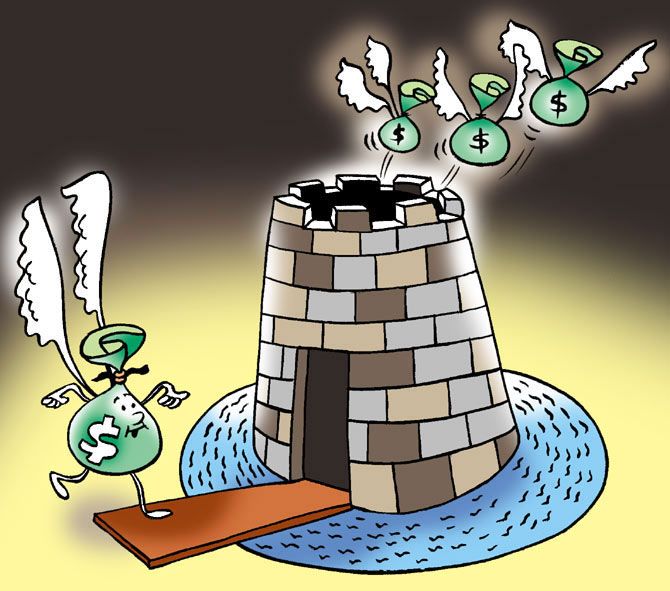After withdrawing record funds in 2021-22, foreign portfolio investors (FPIs) continued their sell-off in the last fiscal too and pulled out Rs 37,631 crore from Indian equities amid aggressive rate hikes by central banks globally.

The outflow trend is likely to reverse in the current financial year since India has the best growth potential in the financial year 2023-24 (FY24), VK Vijayakumar, chief investment strategist at Geojit Financial Services, said.
Market analysts believe that FPI flows in the current financial year would be decided by a host of factors, such as the US Federal Reserve's policy stance, oil prices movement and development in the geopolitical situation.
Since FPIs started investing in 1993, this is the first time they sold consecutively for two financial years.
They sold equities worth Rs 1.4 lakh crore in FY22.
However, the pace of selling slowed down to Rs 37,632 crore in FY23, data with the depositories showed.
Before these outflows, FPIs invested a record Rs 2.7 lakh crore in equities in 2020-21 and Rs 6,152 crore in 2019-20.
In the financial year 2022-23, most of the major central banks started hiking the interest rate, which resulted in the departure of hot money from emerging markets, including India.
This resulted in an unprecedented rise in prices (inflation) in most economies.
Apart from global monetary tightening, volatile crude and rising commodity prices, along with Russia and Ukraine conflict, led to an exodus of foreign money in 2022-23.
On the domestic front too, the scenario was not encouraging.
Rising inflation continued to be a cause for concern and to tame that, the RBI also hiked rates, which cast a shadow on the growth prospects of the domestic economy, said Himanshu Srivastava, associate director - Manager Research, Morningstar India.
Another important aspect that led to the outflows from domestic stock markets was its high valuation compared to other relatable markets, he added.
This has also resulted in foreign investors booking profit here and shifting focus towards other markets, which are attractive on the valuation and risk-reward front.
Apart from equities, FPIs have pulled out Rs 8,938 crore from the debt markets in the period under review after infusing Rs 1,628 crore in 2021-22.
The massive selling by FPIs from the Indian market has been absorbed by domestic institutional investors (DIIs), including mutual funds and insurance companies.
This is a reflection of the rising clout and maturity of domestic investors.
Explaining the sectoral outflow, Geojit's Vijayakumar said that when FPIs turn sellers, they sell in segments where there is liquidity and are sitting on profits. IT and financial services are two segments which meet both criteria.
"When FPIs sell, they are guided more by external considerations like movements in the dollar index and interest rates in the US rather than the prospects in emerging markets.
"But there will be always contrarian themes which will outperform, and therefore FPIs will invest in such segments," he said.
Capex revival augurs well for the capital goods segment in this capex cycle.
Of late, healthcare has received a shot in the arm from the re-emergence of Covid in parts of the country.
FPIs began the current financial year on a positive note and invested Rs 3,747 crore in Indian equities in April amid easing investors' apprehensions about the banking crisis in the US and Europe, and expectation that the US Federal Reserve will most likely slow its pace of rate hikes in future, Morningstar India's Srivastava said.
In addition, earlier higher valuation of Indian equities was also one of the reasons for FPIs to move away to other more attractively valued markets.
However, the recent consolidation in the Indian equities could have also prompted FPIs to invest, he added.











 © 2025
© 2025